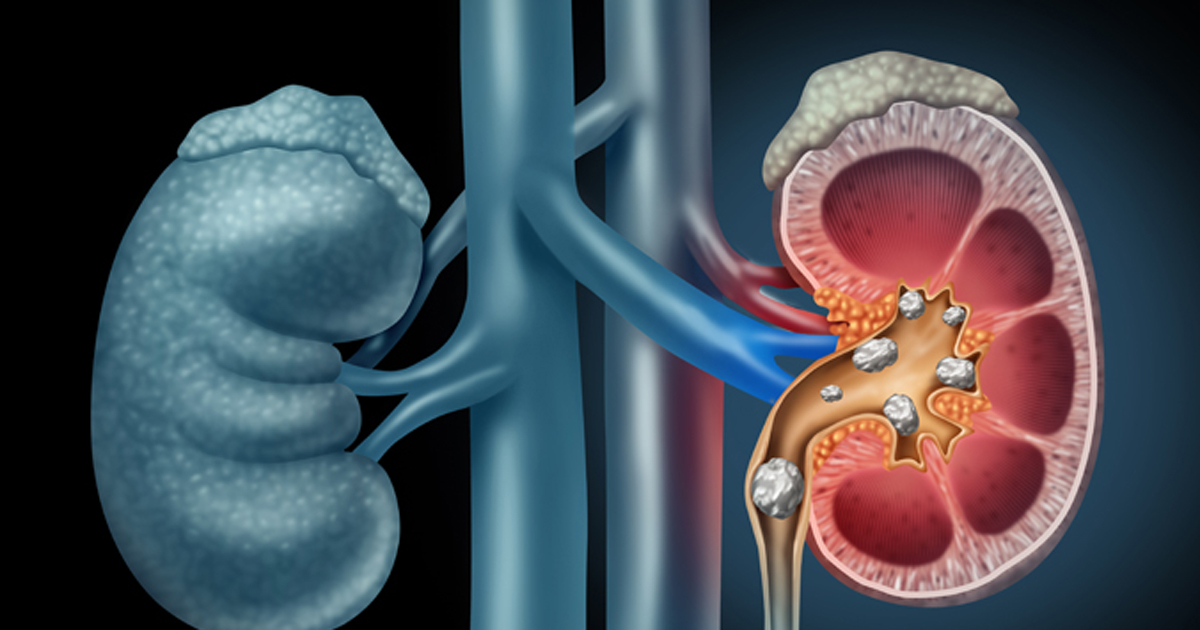Tool predicts risk for kidney stone recurrence using clinical characteristics of patients

The Recurrence of Kidney Stone tool may aid in predicting the risk for symptomatic recurrence by using patients’ clinical characteristics – including age, sex, BMI, family history and pregnancy – according to a study published in Mayo Clinic Proceedings.
“Symptomatic recurrence of kidney stones is a concern, but the likelihood of recurrence depends on 13 risk factors, the number of prior symptomatic stone episodes and the years since the last symptomatic stone episode,” Andrew D. Rule, MD, professor of medicine in the division of nephrology and hypertension at the Mayo Clinic, told Healio/Nephrology.
To develop a list of clinical characteristics that may contribute to symptomatic recurrence of kidney stones, researchers followed 3,364 adult residents of Olmsted County, Minnesota, with a first-time symptomatic kidney stone episode from January 1984 through January 2017. During this time, 4,951 episodes occurred.
After reviewing patients’ complete medical records, researchers identified clinical and radiographic characteristics at each stone episode that were predictive of subsequent episodes.
Researchers found that, per 100 person-years, the stone recurrence rates were 3.4 after the first episode; 7.1 after the second episode; 12.1 after the third episode; and 17.6 after the fourth or higher episode (P < .001).
For the Recurrence of Kidney Stone tool, researchers chose 13 predictors or independent risk factors of symptomatic recurrence consisting of younger age, male sex, higher BMI, family history of stones, pregnancy, asymptomatic stone before the first episode, suspected stone before the first episode, history of a brushite, struvite or uric acid stone, no history of a calcium oxalate monohydrate stone, pelvic or lower pole stone, no ureterovesical junction stone, number of kidney stones and diameter of the largest kidney stone.

Depending on risk factors, number of past episodes and years since the last episode, the risk of recurrence in 5 years ranged from 0.9% to 94%.
“I use this [Recurrence of Kidney Stone] ROKS tool routinely in my stone clinic to help patients have a better sense of their risk for another symptomatic kidney stone,” Rule said. “This helps patients decide on how aggressive they want be with diet and medications to try to prevent kidney stones. [However], this model only predicts symptomatic kidney stones that result in clinical care. We also need to know the risk of symptomatic stones that are self-managed at home by the patient. Radiographic changes in kidney stones (new stone, stone growth or stone passage) may also be useful for predicting future symptomatic stones.”
In a related editorial, Ryan S. Hsi, MD, of the department of urology at Vanderbilt Medical Center in Nashville, Tennessee, wrote: “The phenotype of kidney stone disease is heterogeneous. The revised ROKS model is clinically useful to tailor metabolic evaluation and secondary prevention among those with one or more prior stone episodes in a community setting. In the future, more granular models are needed, for example, to predict symptomatic free recurrence during pharmacological treatment or after surgical intervention. Although the revised ROKS model certainly needs external validation, it is the first prediction tool of its kind to enable personalized risk assessment for kidney stone formers.” – by Melissa J. Webb
Disclosures: The authors report no relevant financial disclosures.
